#Khyber-Pakhtunkhwa
Text
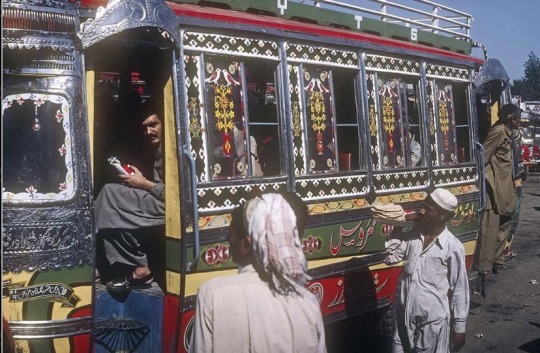

The brightly coloured busses of Mardan, KPK, Pakistan 1979
2K notes
·
View notes
Text
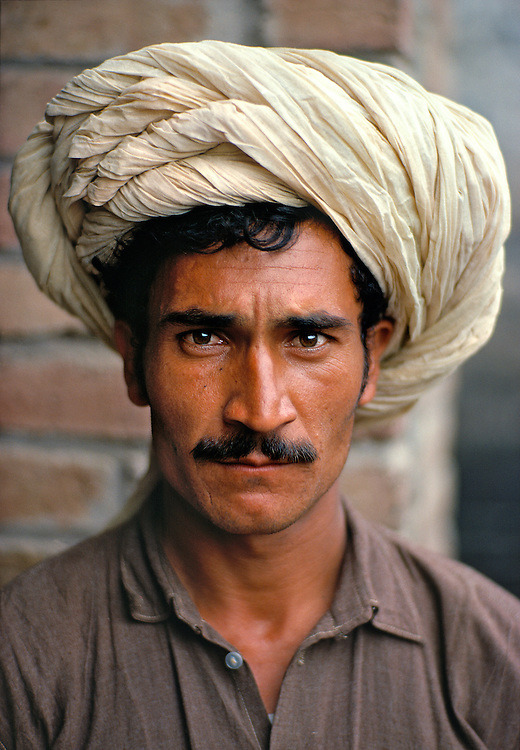
The Pakhtun tribesmen of Pakistan’s Northwest Frontier Province are famous for their gun-making and fighting skills.
Kohat Pass, Khyber Pakhtunkhwa, Pakistan.
Ric Ergenbright
105 notes
·
View notes
Text
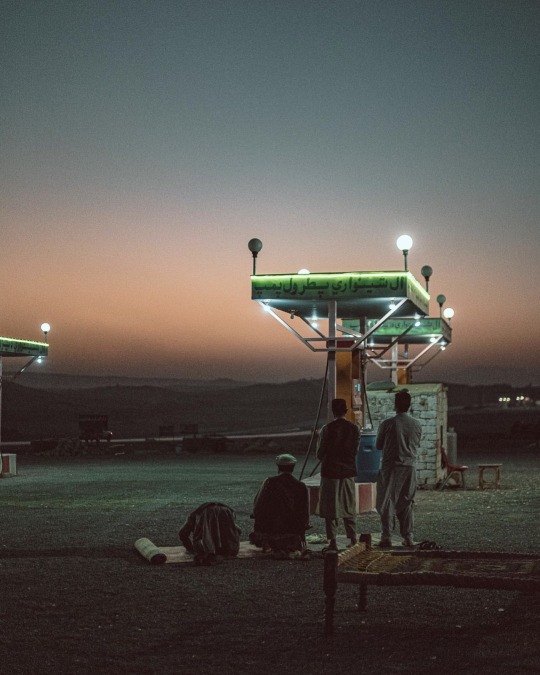
په دې ځمکه کې څومره خلک مشهور دی،
خو په آسمانونو کښې ناڅرګند دی.
او په دې ځمکه کې څومره ناڅرګند دی،
مګر په آسمانونو کې مشهور دی.
How many people are famous on this earth,
but unknown in the heavens.
And how many are unknown on this earth,
but famous in the heavens.
📸: Jake Simkin
#afghanistan#pashto#pashtun#pashto literature#pashto poetry#pashto landays#afghan#khyber pakhtunkhwa#pakhto#pakhtoon#pray for afghanistan#writer#writing#mindset#poems#poetry#thoughts#beautiful#asthetic#simple beauty#allahﷻ#islam#prayer#jannah#typography#poets on tumblr#explore page#follow#pukhtunistan#unfulfilled
83 notes
·
View notes
Text

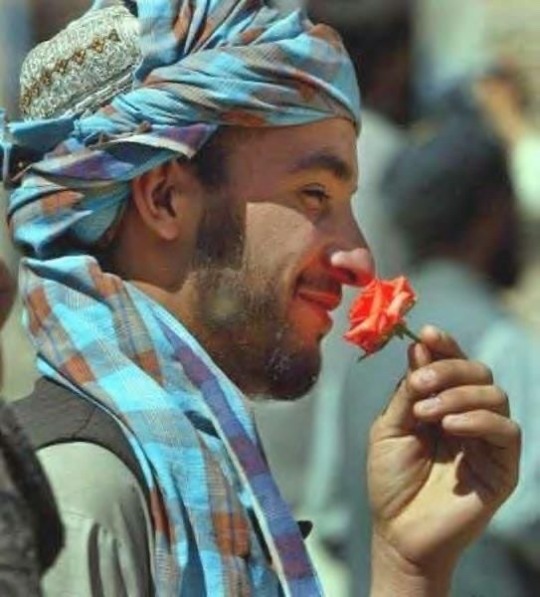
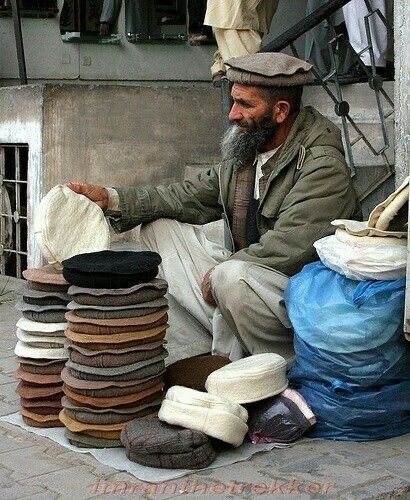
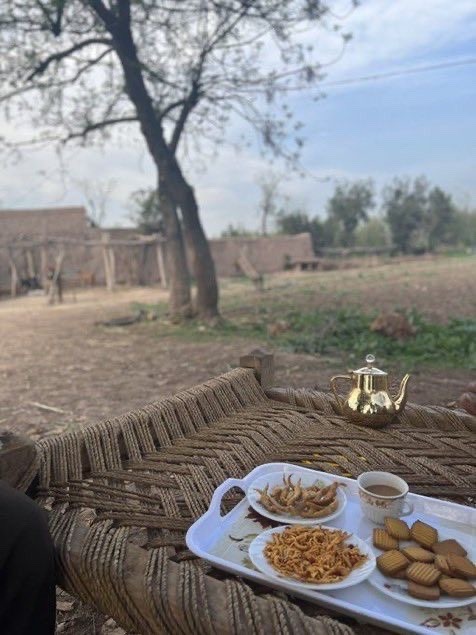
Ma pata da pukhto pa rewajunu ka dildara
- beloved! cover me in the customs of pakhto
#pashto#pashto literature#pashto poet#pashto poetry#peshawar#afghanistan#kpk#pashtun#khyber pakhtunkhwa#pukhtun#culture#native tribe#mardan district
76 notes
·
View notes
Text

This is a Fix version of my Universe' Strongest Fighters because im forgot Kai and im give albero a more good pose
#dragon ball super#tournament of power#universe’s strongest fighters#ben 10 omniverse#ben 10 series#ben 10#ben tennyson#gwen tennyson#kevin levin#rook blonko#kai bölümleri#vilgax#charmcaster#khyber pakhtunkhwa#albedo#malware ben 10 omniverse
8 notes
·
View notes
Text
Women constitute the backbone of Pashtun society and social organisation. Their role is not only limited to home management, they have played a significant role in all fields throughout history. They have stood in the battlefield with men to defend the motherland and if we look into Pashto literature we find a significant contribution of women and their role in society.
Landey, Tapey and Naarey are three forms of unwritten Pashto folk literature, more than half of this fine and heart-rendering poetry is the work of women.
Landay is a traditional Afghan poetic form consisting of a single couplet. The most enchanting landey have been sung by Pashtun women in battlefields and during episodes of love, such as:
پاس په کمر ولاړه ګله!
نصیب د چا يې؟ اوبه زه در خېژومه
Oh flower on the mountain peak,
It is I who water you, God knows who would own you.
Pashtun women also used landey in the battlefield. We come across events in our national history where the singing of a single landey by a woman has proven to be more effective than weapons.
In the battle of Maiwand, when Pashtuns prepared to fight for their country, a Pashtun maiden proudly sent off her lover to the battlefield and dispatched this message to the commander of this patriotic war:
پر ایوب خان مې سلام وایه!
دا دئ جانان مې کومکي در ولېږنه
Convey my greetings to Ayub Khan,
I have sent off my lover to lend a hand.
When the young Pashtun returns triumphant from war, his lover greets him as such:
د خېره راغلې! په خېر راشې!
چې د دښمن په مخ کې خړ نه شوې مئينه
Welcome! Welcome home, thank God,
You were not humbled before the enemy.
[See photos for more landeys]
Other parts of folk literature are Naara in stories and Gharra in the national dance called Attan and Sundarey (songs) recited in weddings. Most of the Naaras and wedding songs have been authored by women. We’ll look into those in future posts. Stay tuned!
Artwork by minnamamik
Source: Prof Habibi articles
Pashtunology


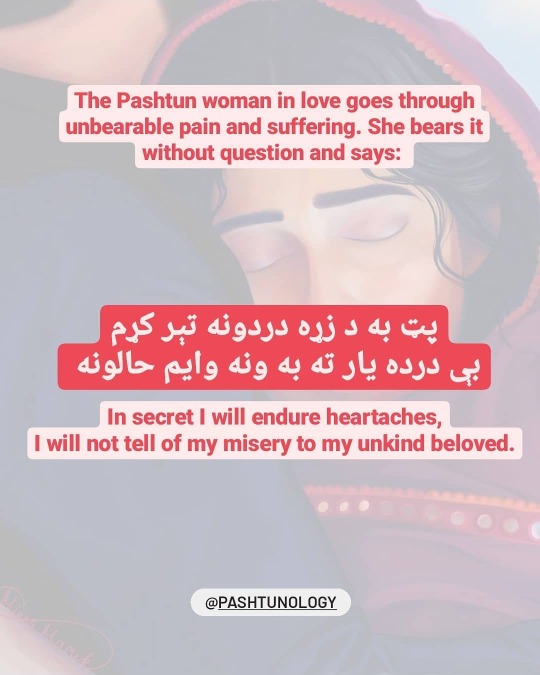
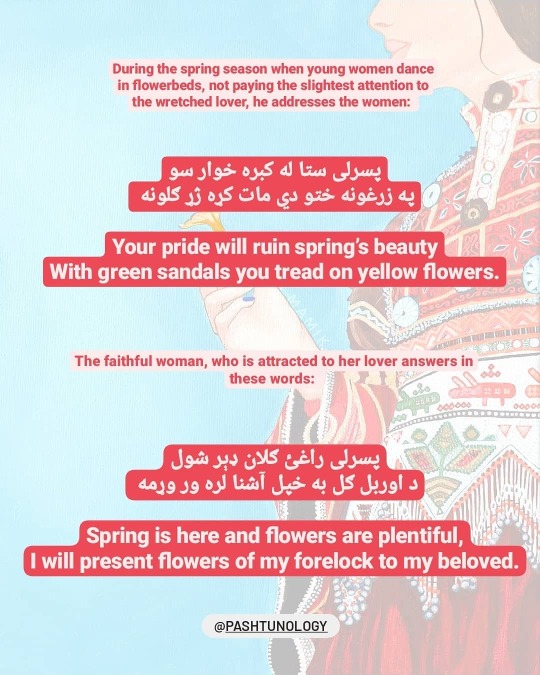

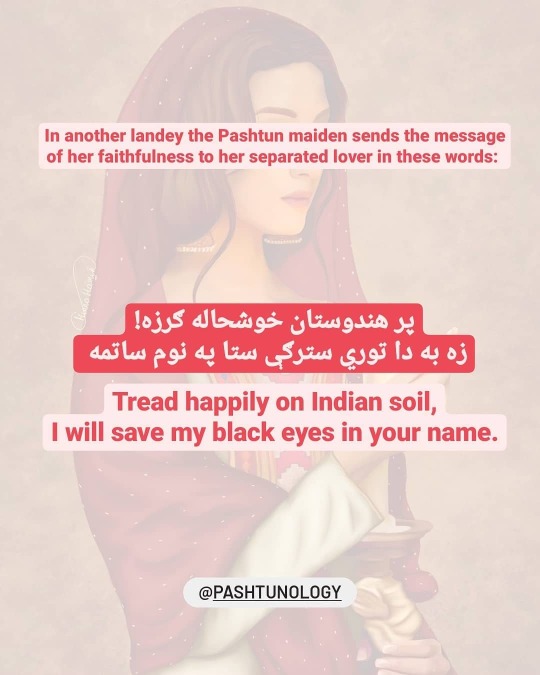



#afghanistan#pashto#pashtun#afghan#art#khyber pakhtunkhwa#pashto poetry#kabul#pashtunology#pashtun history#poetry#پښتو#افغانستان#central asia#culture#pakhtun
25 notes
·
View notes
Text
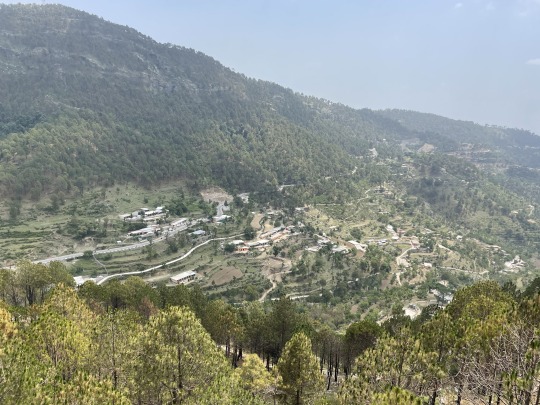
#mountains#Haripur#KPK#Khyber Pakhtunkhwa#Pakistan#view from the terrace#landscape#nature#Whispering Pines
4 notes
·
View notes
Text
Resource List for Learning Pashto
Hello! Do you want to learn Pashto but don't know where to start? Then I've got the perfect resource list for you and you can find its link below! Let me know if you have any suggestions to improve it. Here is what the resource list contains;
"Handmade" resources on certain grammar concepts for easy understanding.
Resources on learning the script.
Websites to practice reading the script.
Documents to enhance your vocabulary.
Notes on Colloquial.
Music playlists
List of podcasts/audiobooks And a compiled + organized list of websites you can use to get hold of grammar!
#langauge learning#language#language resources#discord server#langblr#desiblr#studyblr#south asia#south asians#culture#desi#pakistan#pakistani#pakistan culture#pakistan history#pashto#pashto literature#khyber pakhtunkhwa#pathan#pashtun
66 notes
·
View notes
Text

Bazaar scene in Peshawar, Khyber Pakhtunkhwa, Pakistan
British vintage postcard
#historic#photo#briefkaart#vintage#khyber pakhtunkhwa#british#sepia#pakistan#pakhtunkhwa#photography#carte postale#scene#postcard#peshawar#postkarte#postal#tarjeta#ansichtskarte#bazaar#old#ephemera#postkaart#khyber
6 notes
·
View notes
Text
Kalash people: Pakistan's Smallest Ethnic Minority

The Kalash people are a Pakistani ethnoreligious group. Having a population of only around 3500, they are one of the smallest ethnic groups in Pakistan.
Where do the Kalash people live?
The Kalash people live in the Kalasha valleys of the Khyber Pakhtunkhwa province in Pakistan, bordering the Afghan province of Nuristan. The Nuristanis of that region are considered to be ethnically and culturally related to the Kalash.
Who are the Kalash people descended from?
The Kalash people believe themselves to be descended from Alexander the Great's troops. Some genetic evidence however, claims the contrary (while some affirms it). Other scientists claim that the Kalash people are purely South Asian.
How do the Kalash people identify religiously?
Roughly half of the Kalash people are mostly muslim, after historically being forcibly converted as result of Abdul Rahman Khan's rule. The rest are mostly practicioners of the polytheistic, animist Kalash religion
Kalash celebrations / Chilam Joshi
The Kalash people have three main festivals, listed and described below:
Chilam Joshi
Chilam Joshi (also called "milk day" or "yogurt drink day"). During Chilam Joshi, men and women meet in hopes of finding a spouse. This festival is celebrated with drums and dancing. In 2022, this festival was celebrated from 14 May - 18 May.
2. Uchau
Uchau is celebrated during summer to "thank nature for blessing [the Kalash people] with the harvest season". This festival will be celebrated in 2022 from August 20th to August 24th.
3. Chawmos
During this festival, the Kalash people chant to the Balmain spirit of the Kalash religion. The Kalash people feast, up until the community elders declare the new year. Once they have declared the new year, boys and girls divide and make a bonfire. In 2022, this festival will be celebrated from 16 December to 22 December.
Kalash Clothing
Kalash clothing is very vibrant, often characterized by it's bright designs on dark fabric.

Sources: Kalasha valleys wikipedia, Nuristanis wikipedia, Kalash new worl encyclopedia, Kalash people wikipedia, Chawmos wikipedia, Chilam Joshi wikipedia, Chitral tour packages nature adventure club, Humans of Himalayas: Kalash people photo, Discover Pakistan: Chilam Joshi (this was on TV at my grandma's house), Kalash clothes picture.
#pakistan#afghanistan#afghan#pakistani#pakistani culture#ethinicity#culture#chilam joshi#kalash#nuristan#nuristani#khyber pakhtunkhwa#south asia#south asian#south asian culture#religion#history#alexander the great#chawmos
8 notes
·
View notes
Text
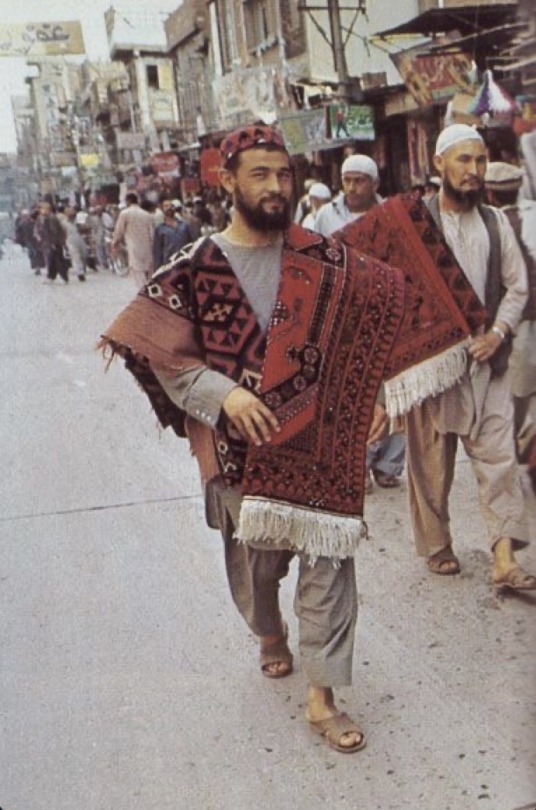
Ethnic Turkmen from Afghanistan selling their hand-made rugs in the streets of Peshawar, Pakistan.
#Peshawar#turkmen#afghan#Pakistan#khyber pakhtunkhwa#afghan rugs#i stole this from twitter buts its fine we hate twitter#pekhawar#kpk#nwfp#Afghanistan#own post
201 notes
·
View notes
Photo
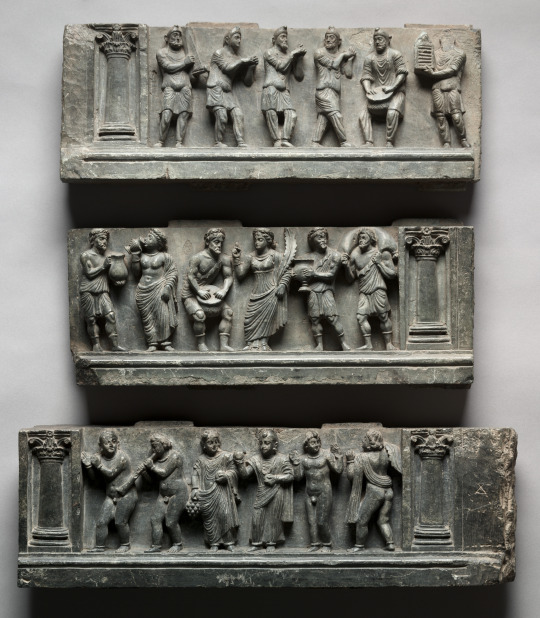
Bacchanalian Relief
Pakistan, Gandhara, Buner area, early Kushan period (AD 1–320)
Phrygians with their trousers, tunics, and conical caps play music, dance, and clap, while Greek figures drink from fluted cups filled with wine decanted from pitchers filled from a wine skin, shown hefted on the shoulders of the figure at the right. The multicultural diversity of the region became pronounced after Alexander of Macedon left a contingent of Greeks to rule the territories of present-day Afghanistan and Pakistan. After the waning of the Hellenistic kingdoms in the first century BC, Scythians and Parthians from Central Asian and Iran took control of the region. By the first century AD, trade between the Roman Empire, India, and China had reached unprecedented proportions, bringing wealth and international merchants to the area. A procession of people clapping, blowing a long horn, dancing, and carrying grapes once adorned a Buddhist monument in a region that had Greco-Roman roots extending back to 326 BC, with the arrival of Alexander of Macedon and his successors. Bacchanalian scenes were carved on the lower portions of public monuments to reference the joyful abundance of life, which may well be enhanced with veneration of the monument and donations to the monastery with which it was associated.
#open in new tab for detail#Bacchanalian#relief#Pakistan#gandhara#buner#kpk#khyber pakhtunkhwa#kushan#Phrygians#greek#history#art
288 notes
·
View notes
Text

زه لوی شوی یم مور
ته نور نشې کولای ما له ځانه سره وړي
زما انديښنې اوس زياتې دي
زما د خوبونو لست تر ما لوړ دی
زه دومره لوی شوی یم چې اوس نه شم کولای د شپې له خوا ستا دروازې
ته ولاړ شم او ژاړم.
I grew up mom,
You can’t carry me anymore,
My worries are more now,
My list of dreams is taller than me,
I have grown so much that now I can no longer go to your door at night and cry.
-Belal Jamali
📸: Omer Faizi
#afghanistan#pashto#pashtun#pashto literature#afghan#pakhtoon#pray for afghanistan#pakhto#khyber pakhtunkhwa#writer#writing#mindset#poems#poetry#beautiful mothers#beautiful#aesthetic#simple beauty#love quotes#childhood#typography#poets on tumblr#follow#pukhtunistan#pashto poetry#explore page#thoughts#pashto landays#asthetic#unfulfilled
32 notes
·
View notes
Text
منم چې ته د حسن د رنګونو باډيوه يی
منم چې ته د مينې د مستئ بله ډيوه يی
منم چې ستا په سترګو کې د نوې نشې اور دې
منم چې ستا په شونډو د سپرلي د خندا شور دې
منم چې ستا نازونه پرهرونه خندوي شي
منم چې اداګانې دې سپرلي لمبه کوي شي
منم چې ستا په زړه کې څه خبره څه قيصه ده
منم چې ستا زما نه څه خفګان دې څه ګيله ده
پوهېږم په غصه غصه کتلو دې پوهېږم
د سترګو د بڼو په خوزولو دې پوهېږم
زه هم څه ويل غواړم خو په زړه زړه کې يرېږم
د مخه دې شرمېږمه د سترګو دې شرمېږم
چې خوله جوړول غواړمه حيا راشي پيکه شم
په ځان پورې خندا راشي د ځان سره کچه شم
دا نه چې زه بې زړه يمه يرېږمه شرمېږم
دا نه چې زه بې مينې يم د مينې نه پټېږم
دا نه چې ستا د حسن په رنګونو بدګومان يم
دا نه چې ستا د مينې په لوظونو بدګومان يم
خو د ماحول د مينې د الفت دپاره نه دې
دا کلي د وطن د محبت دپاره نه دې

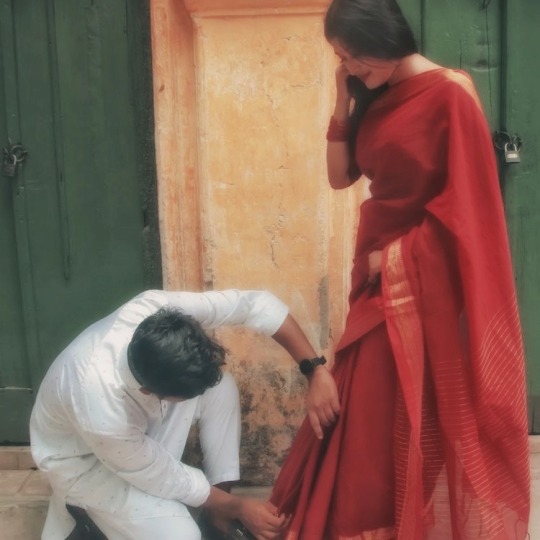
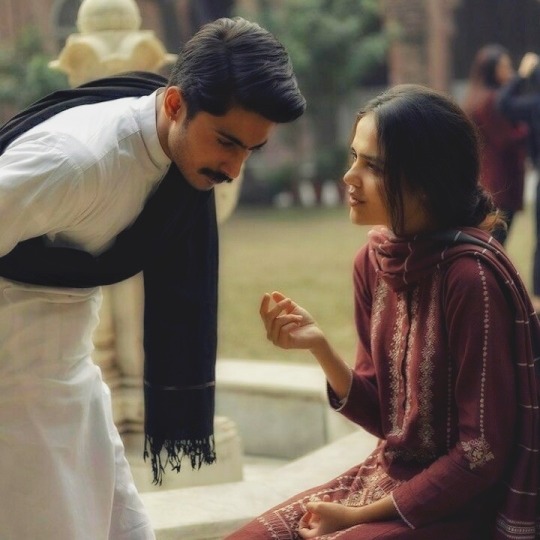

23 notes
·
View notes
Text

Cartoon Tournament of power
Universe 7:Ben 10 Omniverse
#ben 10#ben 10 omniverse#ben 10 series#ben tennyson#gwen tennyson#kevin levin#rook blonko#vilgax#charmcaster#khyber pakhtunkhwa#albedo#Malware ben 10 omniverse#dragon ball super#tournament of power#universe’s strongest fighters
10 notes
·
View notes
Text
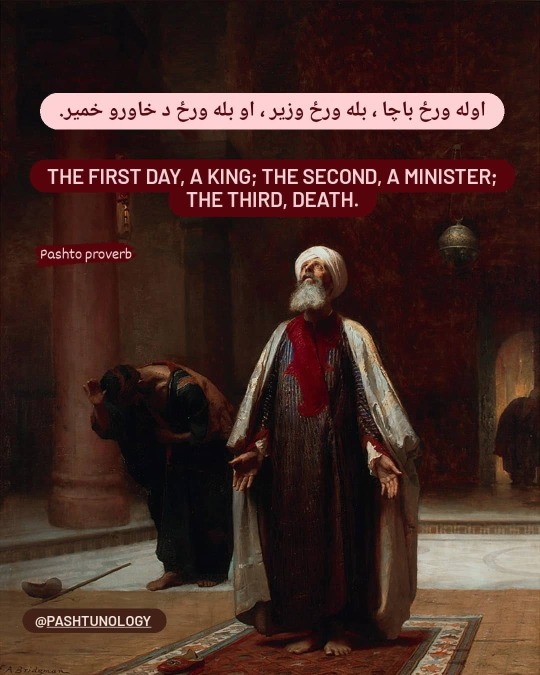
Transliteration:
"Awala wraz baachaa, bala wraz wazir, aw bala wraz da khawro khamir"
The cycle of life is joy, worry and death. A youth is considered free of worry and free to enjoy himself, such as a king should be. The mature man, like a Prime Minister, has the responsibilities and worries attendant upon administering a country.
Alternatively, it is about the untrustworthiness and changing scenarios of life.
The idiom used for death is literally "the yeast (leaven) of dirt" (khawro khamir). When Pashtuns make bread (nän), they leaven it by adding a little bit of yeast (khamir) kept back from the previous batch. In the picturesque language of this rhyming proverb, even the mighty king and wazir (minister) become khamir (yeast) that is added to the earth as part of the cycle of life.
This proverb reminds me of a couple of lines by Ghani Khan.
پرون تخم وم، نن ګل یم، سبا بیا به خاؤره کېږم
زه د باد یوه څپه یم، په صحـــــرا په باغ تېرېږم
"Yesterday a seed, today a flower, tomorrow I’ll turn to dust;
I am a gust of wind blowing over the desert garden"
#afghanistan#pashto#pashtun#afghan#art#literature#proverbs#idioms#pashto poetry#poetry#middle east#central asia#افغانستان#khyber pakhtunkhwa#kandahar#kabul#peshawar#pashtunology
32 notes
·
View notes